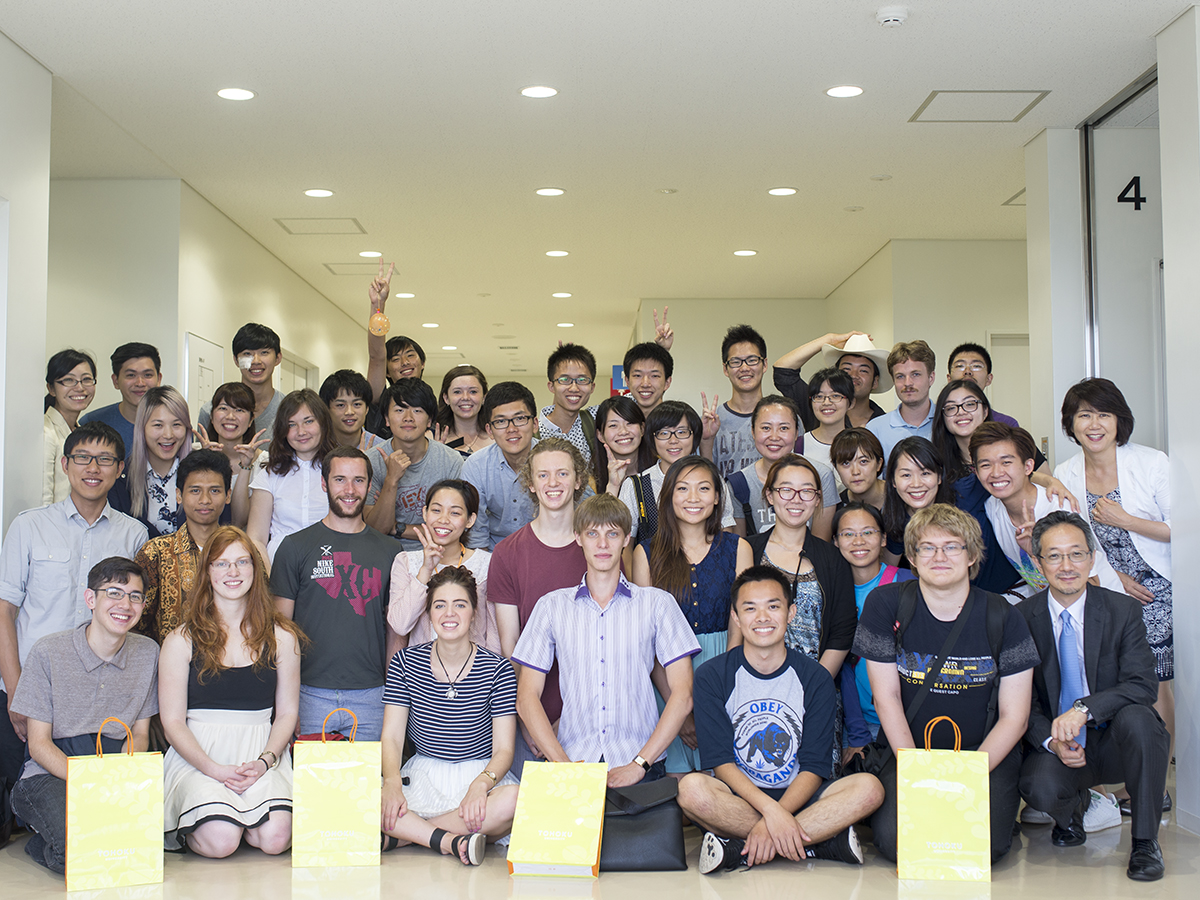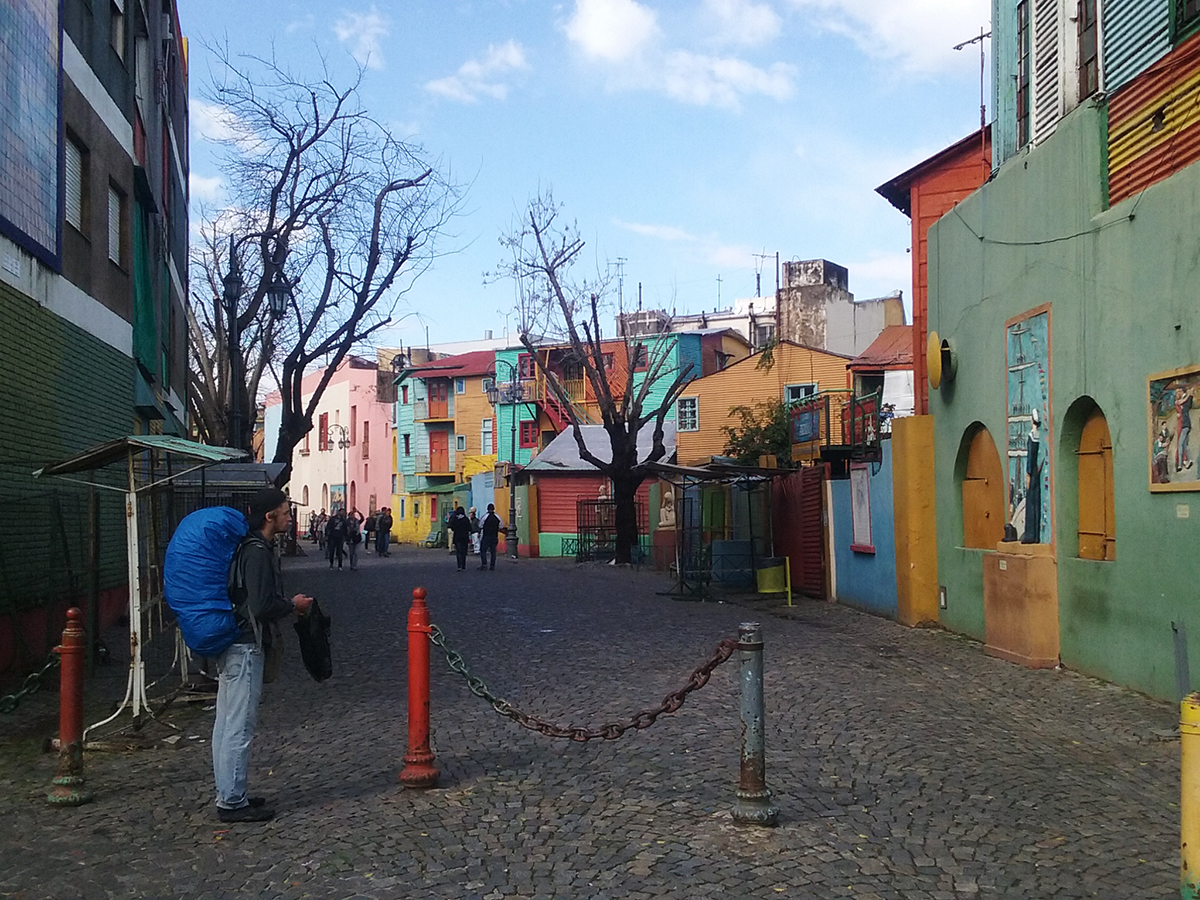
“It really was the time of my life”
Last July, I went to Japan as part of an ongoing study abroad agreement between UCR and our sister school, Tohoku University in Sendai, Japan. Just saying that it was the best month of my 20 years on this earth would be an injustice to everyone I met and everything I experienced there.
Initially, I had absolutely no plans of applying to any study abroad programs until mid-spring quarter. Luckily, I bumped into a friend on campus who mentioned that the program she went on last year was nearing its deadline and lacking applicants. After that, things just kind of steamrolled. Before I knew it, I was on a plane to a country that had been on the top of my bucket list ever since I heard my first Taiko performance in high school.
What happened in the weeks following was an absolute dream. Japan really is jaw-droppingly gorgeous. The streets of Sendai were bustling and filled with hundreds of little shops and places to satisfy anyone’s senses. It was Japan, so it was a little crazy. But it never felt too crazy, just the right amount of it. As someone who loves crowded cities with heavy foot traffic, Japan was heaven for me. Everywhere you go there’s something to see. Even walking over 20,000 steps each day was a breeze because there was always something worth walking to or through.
The program itself was an incredibly put-together array of hands-on lectures (from flower arrangements to Taiko practice to calligraphy class) and ever-entertaining Japanese classes. None of the sessions ever pulled me too far away from the fact that I was having the time of my life in Japan.
But the memories that I will hold onto forever, the ones that I can recall with no effort, were the memories that I made with everyone I met in Sendai. Our group of 29 study abroad students were lucky enough to be constantly in the company of two amazing advisors and a good handful of volunteer students from Tohoku University. Many of the Japanese students had even been to UCR the previous year for their own study abroad adventures, so sharing memories of their experiences in LA and UCR made it feel like we were already old friends just catching up.
It’s incredible how quickly the Tohoku students warmed up to all of us. Just imagine your perfect dorm hall, and that was about what my experience was with the Tohoku students. Friendly, kind, enthusiastic, energetic, curious and adventurous aren’t enough adjectives to describe how they were toward our group of 29 previously complete strangers.
I wish I could write a whole newspaper’s worth of memories on my trip, but if I were to only have the space provided, that space would be dedicated to the amazing faculty and students from Tohoku University that made the trip infinitely better just by wanting to hang out and explore the city with us.
Japan can be a daunting place, especially if you’re not familiar with the language. But I have to say, going there for the first time on a study abroad program was the best decision I’ve ever made. It opened the door to so many lifelong friendships. And I already know that when I come back to Sendai (I’ve already started saving again), it’ll feel like just one big family reunion.
One last thing. Yes, I did go to a cat cafe. And yes, it was incredible.

Argentina: searching for identity
I’m a europhile. Between the classic French architecture, Italian operas, Spanish literature and my obsession with British pop culture (no, I’m stopping you there, I don’t watch Doctor Who), the love I have for the European Union and culture surpasses even my adoration of Kanye West (Yeezus forgive me). Therefore, I decided that I wanted to travel abroad to Europe the summer before I graduated. In a way I did, in South America.
Buenos Aires, Argentina, is perhaps the most European city in the world outside of Europe. Between the fashionable inhabitants, historical Italian neighborhoods, French colonial buildings and a fascination with the Beatles, the culture definitely resonates in the city more than anywhere else west of the Atlantic.
Settling in my apartment in the middle of the Palermo neighborhood known as the fashion district of the city, I was close to a lot of what the city had to offer. Bars, night clubs, cafes, parks, a zoo, a planetarium, were all readily available for me to explore. Yet even further in the city there were more museums, landmarks, capital buildings, protests and street art all contributing to the ever-changing culture of the city.
The first location my study abroad group visited was a restaurant right next to the Puente de la Mujer (Women’s Bridge). Situated next to one of the most famous landmarks of the city, all of the rumors I had heard about Argentine beef were confirmed; it is the best in the world. That steak, however, was not the best that I had in Buenos Aires; that honor goes to Don Julio. The taste is nearly impossible to describe, just the spicing and how fresh it was, the flavorful juices cruising through my tongue, I’m almost certain I won’t have a steak as great as the one I had in Don Julio, ever.
While I could drone for hours on the food, the erratic architecture caught my eye immediately. Signaling years of corporate corruption and shady land deals, it’s very common to see a colonial French style building next to one built in the 1970’s. While it is a bit upsetting to see that many of the old buildings are gone, it helps describe the city and its many inhabitants, who are unified by an identity that is constantly changing.
Many museums also display this nature, from Modern exhibits depicting Latin American artists including a variety of styles: surrealism, realism, post-modernism to older paintings and even tapestries from the medieval period to the 19th century.
The country’s history also helped shape much of the attitude of the city. As the country in Latin America that suffered the worst losses during the dictatorships of the late ‘70s and early ‘80s, many engage in political demonstrations on an almost daily basis.
One of the most memorable protests was the march of “Los Madres de la Plaza de Mayo” (Mothers of the May Plaza). Consisting of elderly mothers whose children disappeared during the dictatorship, the group joins in the Plaza de Mayo every Thursday to demand answers from the government. Now largely a symbolic event, this protest is a landmark of the city, which embraced and challenged all sides of its difficult history.
In addition, street art flourishes throughout the city, with many people practicing their freedoms that were once suppressed during the military junta. On my last day in the city, I decided to take a tour of La Boca, one of the cities that was a historically Italian neighborhood, characterized by impoverished inhabitants and its colorful design. La Boca is home to many street art pieces channeling artists from Banksy to more traditional Latino muralists. The buildings are painted in a variety of colors, green, bright yellow, orange and even pink.
The art performances deserve an entire article on their own, however it would be a sin if I neglect to mention Fuerza Bruta. Think Cirque du Soleil on steroids in a smaller venue. Unfortunately, it was such a crazy performance that I’m at a loss for words. I can only say it is everything you expect and more.
I definitely wish to return to Buenos Aires in the future and the many adventures I had are far too short to describe in one article. It was an experience I’ll never forget, and if I had not been to Buenos Aires, I would likely neglect my goals to visit other parts of South America. However, for those who know me, the real reason I probably want to return is because I’m addicted to that accent; sho le amo a todo vosotros (Love you all).

“So I Went to Japan Over the Summer … ”
You would think that going to an iconic country like Japan would just be a trip filled with fun antics involving old temples, never sleeping cities and amazing food for days (and hopefully Pokemon centers … ). You would think the phrase “so I went to Japan over the summer” can only end on a good note. And, it did. How is it not a good note to pet a tame doe in front of a famous temple? But, my recent trip was more than just fulfilling the tourist-y dreams of anyone into Japanese culture (I’m looking at you, anime and manga lovers). If anything, it was the reality-check about my beloved country that I needed and welcomed. And, I think it is something all people who study abroad should achieve.
No country is perfect (well, except Germany or Finland. They seem to have the right thing going). As college students, I think we all understand this fundamental idea when it comes to nations, but I don’t think it sinks into our thinking organs until we step off the plane.
Japan has a special place in my heart as my childhood home. I mostly remember fond memories of wearing summer yukatas and watching fireworks. Home for me is the sweltering heat of the summer sun and the chorus of chirps from the cicadas (also, a motif that establishes any Japanese school setting in an anime … ). I wasn’t used to thinking about Japan in a critical perspective, despite having taken college classes on it. I needed to ‘see’ all the issues I learned about in order to ‘believe.’
Through an OAP (Opportunities Abroad Program) internship, I received the opportunity. For five weeks, I rode trains all across western Japan, witnessing green forests and small towns pass by as I headed toward various Japanese high schools. As an international student, I aided in facilitating an empowerment program, which heavily consisted of group discussions on topics like identity, positive thinking and global issues between Japanese high school students and I. As I glanced through the class schedules, eyeing the discussion topics that I would soon lead with my group of four to five students, I couldn’t help but think: “Wow, this is gonna be boring.” These were the same topics I had to dredge through at many a school assembly, hearing a monotone teacher go on and on about goals and leadership and yada yada.
I had prepped myself for lackluster discussions and students unwilling to even try, especially since they could only speak English. Instead, I was met with personal stories and critical opinions. When asked what they wanted to do after high school, I had students tell me they couldn’t see the point of going to Tokyo University because they didn’t want to. I had students tell me they felt uncomfortable about the current relations between Japan, China and Korea. I had one student tell me she hated herself.
For some, these discussions were the first time these students voiced such emotions. I did what I came for: I listened and encouraged my students — all while wondering if this was what my mother went through and if this was the reason why she didn’t put me in Japanese school.
I left Japan a bit dazed. And now, a bit worried. Last spring, an order was given to all the national universities in Japan to “to either abolish their undergraduate departments and graduate schools devoted to the humanities and social sciences or shift their curricula to fields with greater utilitarian values.” Many of my students expressed an interest in majoring in the fields targeted. I told them to go ahead. Nothing can stop you. I fear that the advice I gave will be all for naught. I wonder why I didn’t pay attention to this more.
I think when you study abroad, you shouldn’t go as a tourist. Go as a global citizen. As a critical thinker — not someone who I will associate with a corny Hawaiian shirt and socks with sandals. Don’t be afraid to get to know the country from its imperfections and beauty.
Oh and go to Nara. There are very cute deer.








